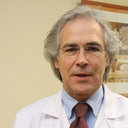Headache in cerebral hemorrhage is associated with inflammatory markers and higher residual cavity.
Schlüsselwörter
Abstrakt
OBJECTIVE
The mechanisms responsible for headache in patients with intracerebral hemorrhage (ICH) are not completely understood. The present study was undertaken to analyze the headache-associated factors, the possible related biochemical mechanisms, and the headache potential predictors of outcome in spontaneous ICH.
METHODS
We prospectively studied 189 patients from a large cohort of 266 consecutive patients with supratentorial ICH admitted within the first 12 hours of symptoms onset. The presence of headache at stroke onset was evaluated in these patients. The volumes of the initial ICH, peripheral edema at 48 hours, and the residual cavity at 3 months were measured on CT scan. Glutamate, interleukin-6 (IL-6), and tumor necrosis factor-alpha (TNF-alpha levels were measured in blood samples obtained on admission. The Canadian Stroke Scale (CSS) and the modified Rankin Scale were used to evaluate stroke severity and neurological outcome, respectively.
RESULTS
Headache at onset of stroke was observed in 65 patients (34.4%). Patients who experienced headache had a significantly higher frequency of history of infection (P= .009) or inflammation (P= .045), as well as higher body temperature (P= .021), leukocyte count (P= .038), ESR (P= .011), and mass effect (P= .017) on admission. Plasma concentrations of IL-6 and TNF-alpha were significantly higher in patients with headache than in those without. Headache was an independent predictor of the residual cavity volume in patients with spontaneous ICH (odds ratio 6.49; 95% CI 2.51 to 16.78; P= .0001).
CONCLUSIONS
Headache at ICH onset is associated with clinical and biochemical markers of inflammation and is an independent predictor of higher residual cavity volume after spontaneous ICH.


